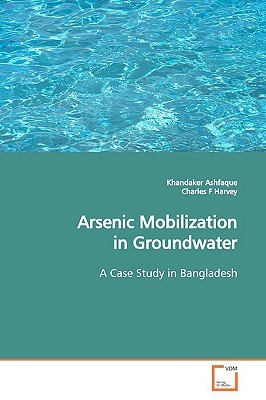
- We will send in 10–14 business days.
- Author: Khandaker Ashfaque
- Publisher: VDM Verlag
- ISBN-10: 3639101022
- ISBN-13: 9783639101027
- Format: 15.2 x 22.9 x 1.4 cm, softcover
- Language: English
- SAVE -10% with code: EXTRA
Reviews
Description
Naturally occurring arsenic in groundwater has emerged as a global problem. Millions of people throughout the world are affected by arsenic poisoning in drinking water. However, very little work has been conducted to understand hydrogeochemical dynamics, and the transport of arsenic. We use a small region in Bangladesh, where high levels of arsenic have been found, as the study area. We carried out various field experiments, laboratory analyses, and numerical modeling to investigate the geochemical and hydrological impacts on arsenic mobilization in groundwater. The insights offered by our "Pond Hypothesis" on the mobilization of arsenic and its transport to depth, are pertinent not only to the study area, but also to the regions throughout the Bengal basin and beyond, where similar geochemical and hydrological characteristics prevail. This work addresses some of the important questions related to arsenic contamination in groundwater, and should be especially useful to professionals in Environmental science and/or engineering, or anyone else who may be interested in learning about arsenic mobilization in groundwater.
EXTRA 10 % discount with code: EXTRA
The promotion ends in 19d.13:47:54
The discount code is valid when purchasing from 10 €. Discounts do not stack.
- Author: Khandaker Ashfaque
- Publisher: VDM Verlag
- ISBN-10: 3639101022
- ISBN-13: 9783639101027
- Format: 15.2 x 22.9 x 1.4 cm, softcover
- Language: English English
Naturally occurring arsenic in groundwater has emerged as a global problem. Millions of people throughout the world are affected by arsenic poisoning in drinking water. However, very little work has been conducted to understand hydrogeochemical dynamics, and the transport of arsenic. We use a small region in Bangladesh, where high levels of arsenic have been found, as the study area. We carried out various field experiments, laboratory analyses, and numerical modeling to investigate the geochemical and hydrological impacts on arsenic mobilization in groundwater. The insights offered by our "Pond Hypothesis" on the mobilization of arsenic and its transport to depth, are pertinent not only to the study area, but also to the regions throughout the Bengal basin and beyond, where similar geochemical and hydrological characteristics prevail. This work addresses some of the important questions related to arsenic contamination in groundwater, and should be especially useful to professionals in Environmental science and/or engineering, or anyone else who may be interested in learning about arsenic mobilization in groundwater.


Reviews